Email best practices
Optimizing your global strategy with email localization

Email best practices

If you love to travel, you definitely know how it feels when you experience different cultures, traditions, and customs of distinct countries. Of course, sometimes, hopping on a plane and heading to some far-off exotic destination is easier said than done. The COVID-19 pandemic canceled all our travel plans for almost two years.
While people have resumed traveling, it’s still recommended to take all the necessary precautions to prevent contagion. But what if we told you there’s a way to travel without leaving your home office? Metaphorically speaking, of course!
Optimizing your email strategy for global audiences is a bit like traveling – you need to lean on different cultures, learn about local traditions, and maybe even pick up some of the local languages.
Are you still unsure of why you should localize your global email marketing strategy in the first place? Let’s walk you through the reasons why it’s important, give you insights into email user habits worldwide, and even offer you a few tips on getting started.
Email can’t be put in a single geographic box. It can be sent and received anywhere and everywhere. Obviously, different countries have very different languages, customs, and traditions. For example, suppose your email references U.S. slang or culture when enticing users to buy something. In that case, it’ll ring hollow for your audiences in France, Italy, and more.
This principle works regardless of where you are and which region you’re referencing, and your emails won’t feel awkward and distant to everyone who isn’t part of that region’s culture.
That awkwardness and distance can drive down engagement and conversion, which – as you know – only spells trouble for your email program.
If you want to be successful, you need to optimize your email localization strategy for a global audience. This might seem intimidating at first, but the rewards of a global email strategy are pretty great.
While developing a stellar email marketing strategy, we tend to overlook a few things here and there. Let’s take a look at those so that you don’t miss them the next time you’re designing a strategy.
The term “localized” in localized global email strategy is pretty much what it sounds like, meaning crafting messages around regional preferences. Check our data below to see what email users in different countries really want.
Why do people sign up to receive brand emails around the world? Is it because they love your weekly deals? Or do they want to get your updates, even if there’s no tempting promotion involved? Our 2021 Email engagement report shows that while there are broad trends for why people sign up for emails, there are significant differences across various regions.
For example, 60.8% of email users in the U.S. said that they sign up for brand emails to receive special offers, compared to 48.6% of French users. Additionally, 48.3% of Spanish users signed up to receive brand updates, as opposed to 31.1% in France.
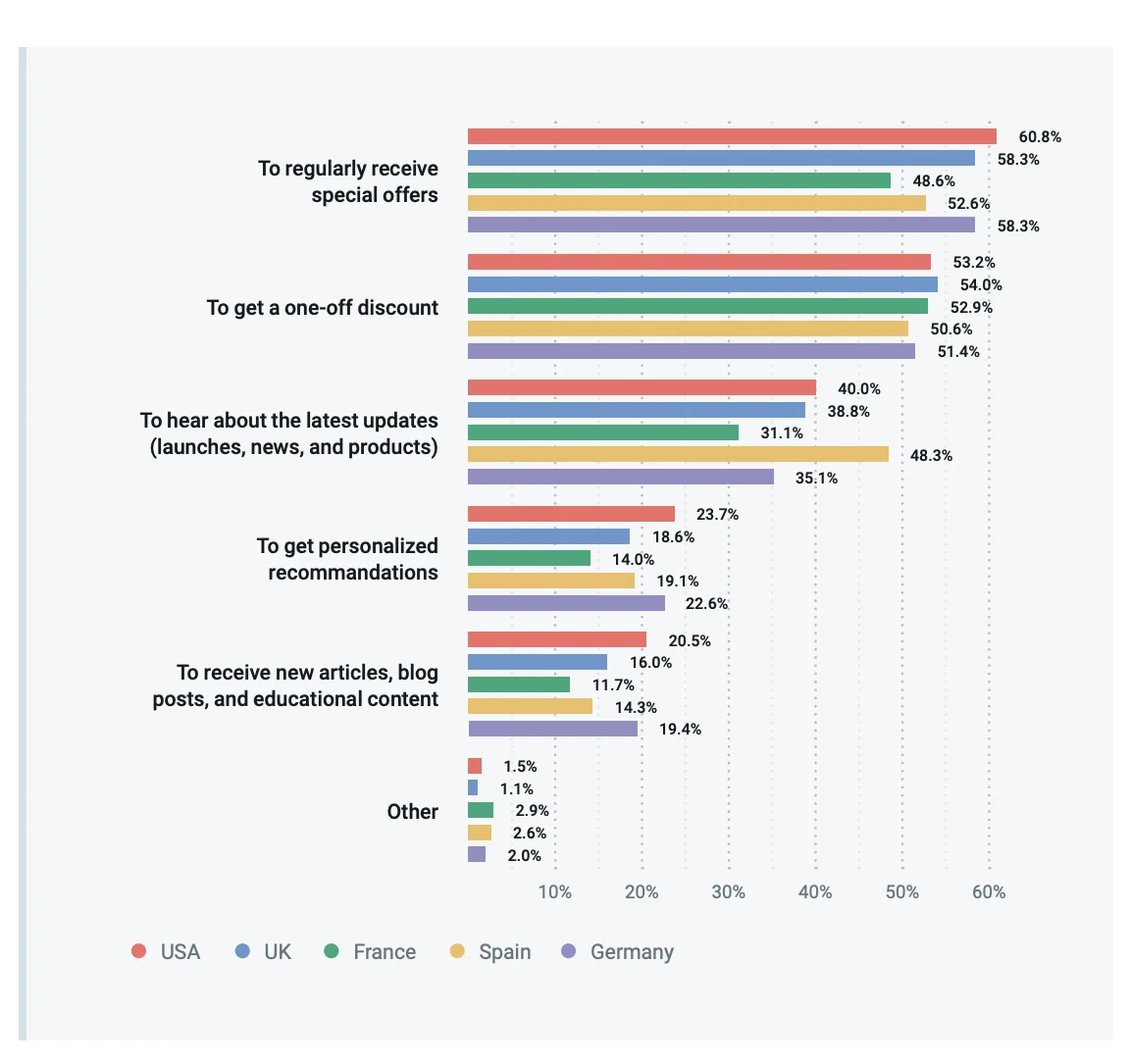
Why do you subscribe to an email list?
When sending, you need to ensure that you’re modifying your global email strategy for each region’s desires. Use this data to build a more localized approach:
Your audience may fall along these data lines or have different preferences. No matter what, you can begin by using data and refining as you go along.
Now that it’s been established that different countries want different things from the emails they receive, the question is: How do you adapt your strategy and messaging to appeal to the widest possible audience?
Location-based segmentation is a great way to get started but is not enough to create genuinely relevant emails that speak to each of your contacts, wherever they might be. At Mailjet, we’re always preaching about email personalization. Everyone likes it, and the data reflects that.
When it comes to what leads to recipients opening emails, 83.3% of respondents say that an email that seems personalized to their interest is essential, while 43.6% cite that this personalization is actually “very important.” These responses are consistent across all regions globally.
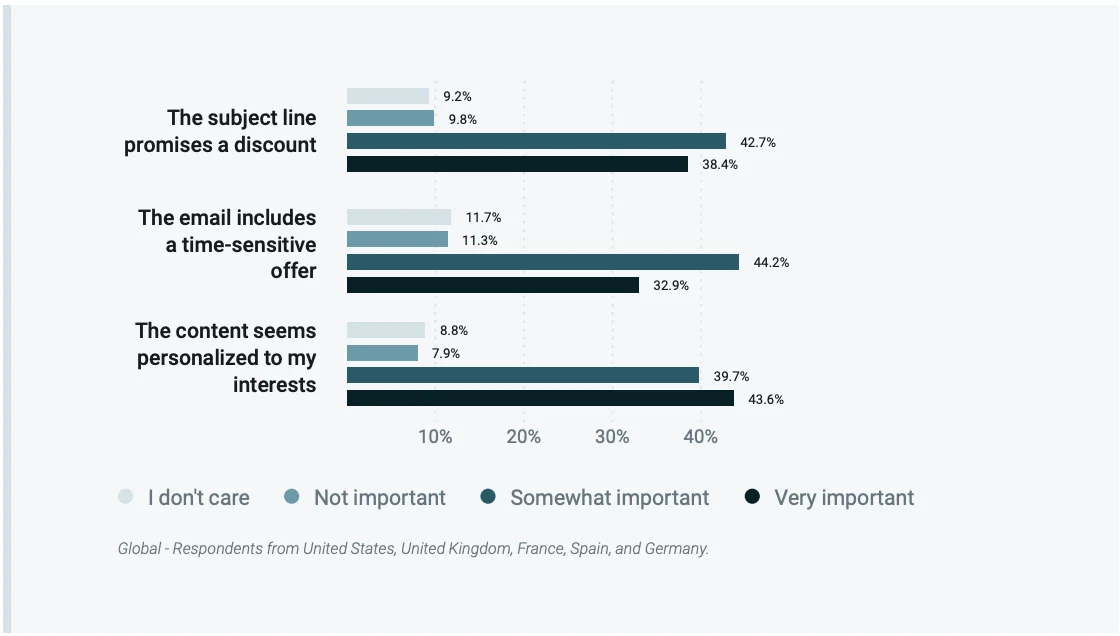
Why do you open emails?
Use segmentation to break your contact list into different segments based on location or preferences, and add complex personalization through templating language and dynamic content blocks. Obviously, just like with any communication, there’s no one-size-fits-all solution when it comes to emails. Find out what your audiences want, and target them accordingly.
We all know that various countries have different ways of living life, especially through communication. And we don’t just mean language; you can’t simply change “soccer” to “football” and expect that your work is done. Consider diving into the culture and etiquette of various regions to generate desired results.
Again, this isn’t just about switching some words around. It’s about understanding holidays, events, and perspectives. Celebrating German Unity Day with a sale will confuse non-Germans, just as sending out a Fourth of July message will fall flat with anyone who isn’t from the U.S.
What’s the cause for celebration, discussion, and promotion in different regions? What should be handled with care and respect? What’s considered taboo or disrespectful? Don’t create an email gaffe just through lack of research or double-checking.
You’re not just a brand. You’re a brand with a unique flair that’s like no other. For example, you decide to promote a new global product sale with a really punchy subject line, like “Damn. That’s one hell of a sale!” As long as it fits your brand style, it’s cool, right? Not necessarily. Just like with cultural customs, what’s considered fun, funny, and casual in one country’s email etiquette may be regarded as rude, insulting, and cringeworthy in another. And using Google Translate may not be the best idea.

Spend time researching and gathering data on what messaging appeals to your regions. It may mean switching your messaging significantly, but it’ll be worth it for better engagement and conversion rates. Remember, when in doubt, play it safe.
Once you’ve decided your content and style, all you’ve to do is press send whenever, right? Not really. Here are some tips to consider before sending emails into cyberspace:
The first thing you should understand about global email strategy is the different email clients people use. Our email engagement report found some surprising variations in the clients people use.
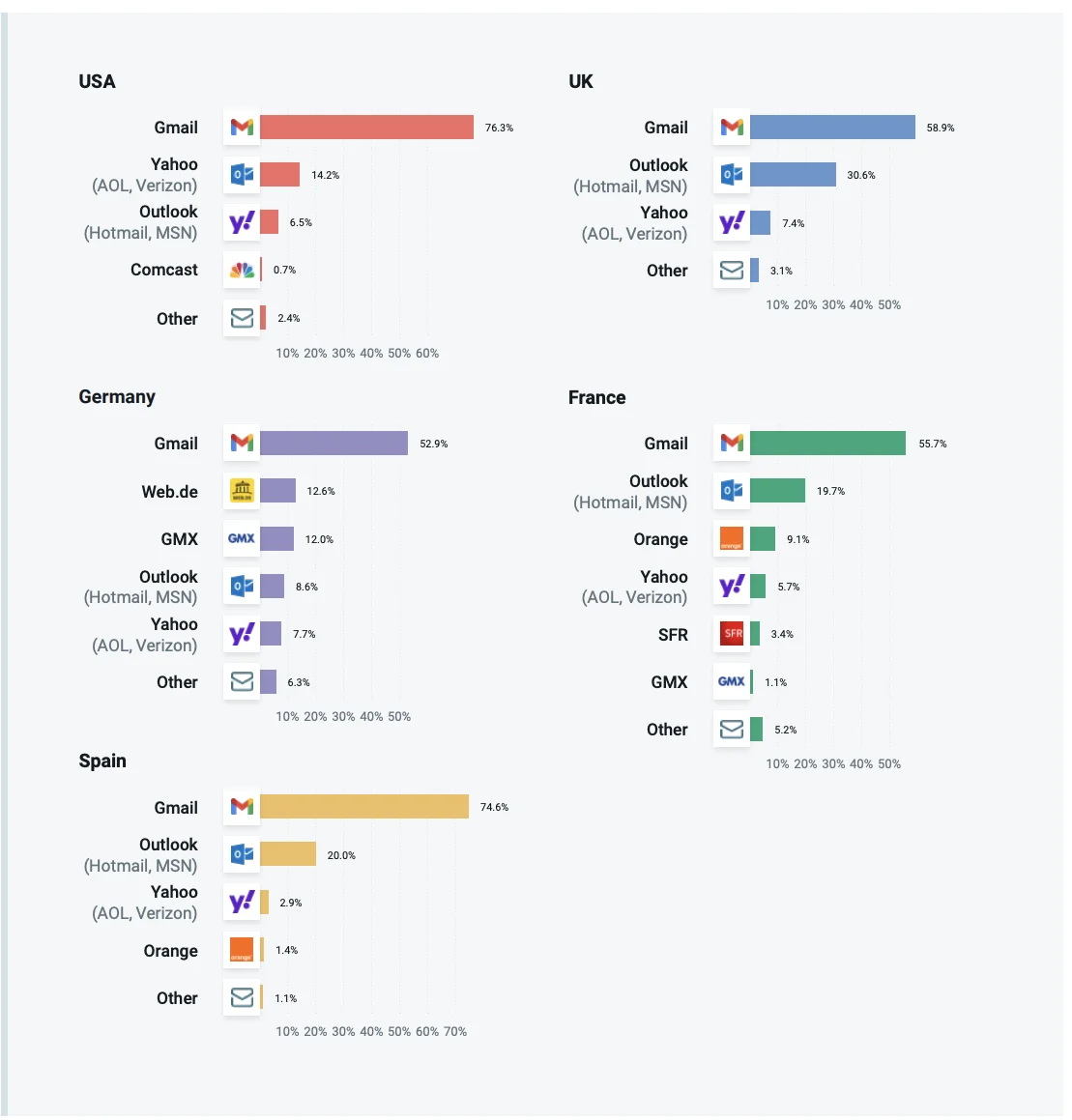
Gmail is still the king across all regions surveyed (at least 50% of all users in every country have a Gmail account). Here’s what you should know about each country:
Targeting your emails for preferred clients based on each region will lead to better-looking and better-performing emails. For more tips on maximizing deliverability for an email in the top global clients, check out the top email clients of 2021.
Nowadays, it’s not surprising that most people receive lots of emails regardless of where they live. According to our research, U.S. users tend to receive the most emails. Still, most respondents reported impressive inbox volumes, with most of each region receiving 20 emails daily or more. Here’s how many emails respondents in different regions say they get each day:
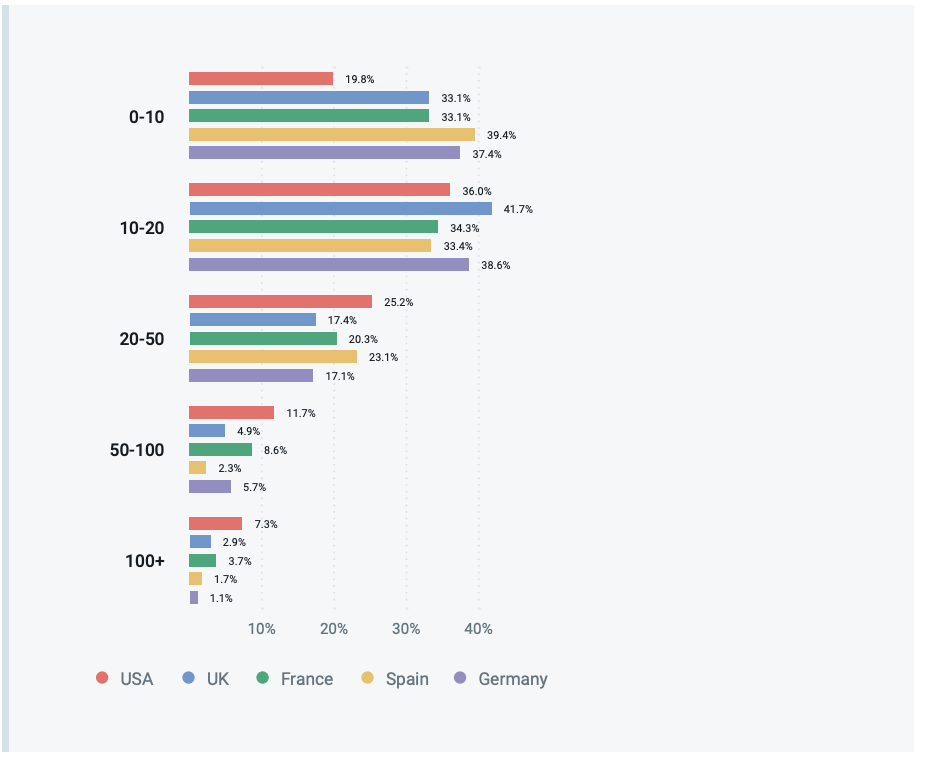
How many emails do you open each day?
It’s vital to change the focus of your emails if you’re trying to maintain or improve your deliverability. Different places deal with unwanted emails, and charging ahead with generic, unasked-for messages can hurt your deliverability, as shown below.
For example, the French are 27.5% more likely to ignore an email they didn’t sign up for than others, while U.S. users are 33% more likely to mark it as spam.
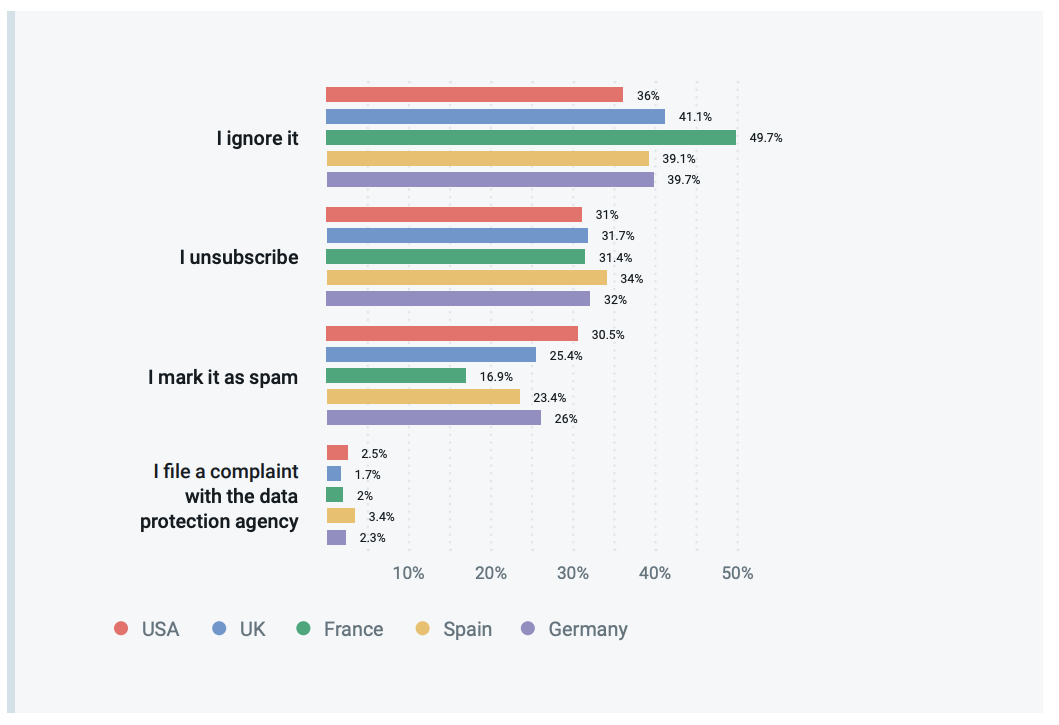
How do you deal with unwanted email?
Not surprisingly, all these emails correlate to some fairly frequent email checking. Most respondents check their email at least twice daily, with a quarter checking more than five times daily.
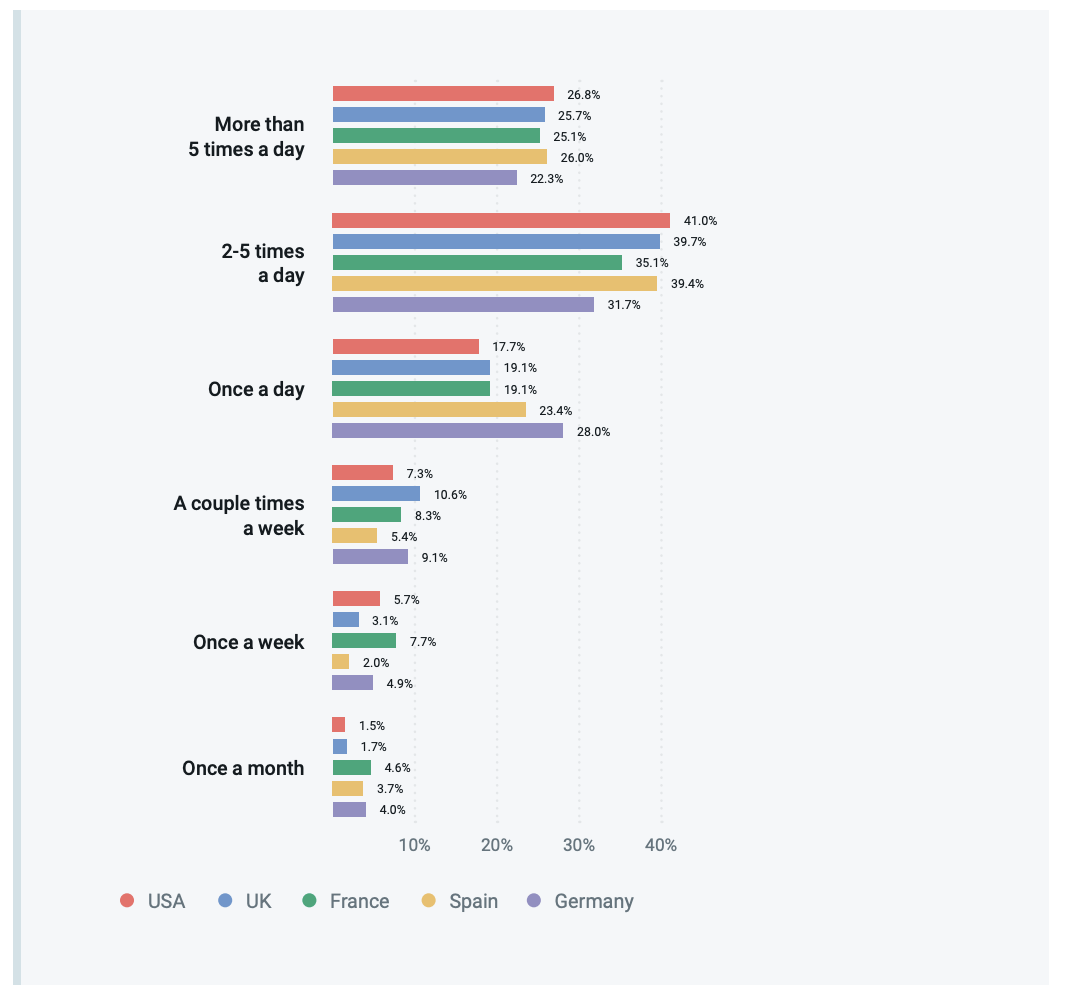
How many times do you check your email?
However, even all that frequent checking doesn’t mean your email will be opened or engaged with (especially among all daily emails). For best results, you want to ensure that your email is sent right when your recipient is most likely to check their inbox.
But how do you find the time that people check their inbox? While there are some differences between countries, our data reflects broad global trends around email-checking habits
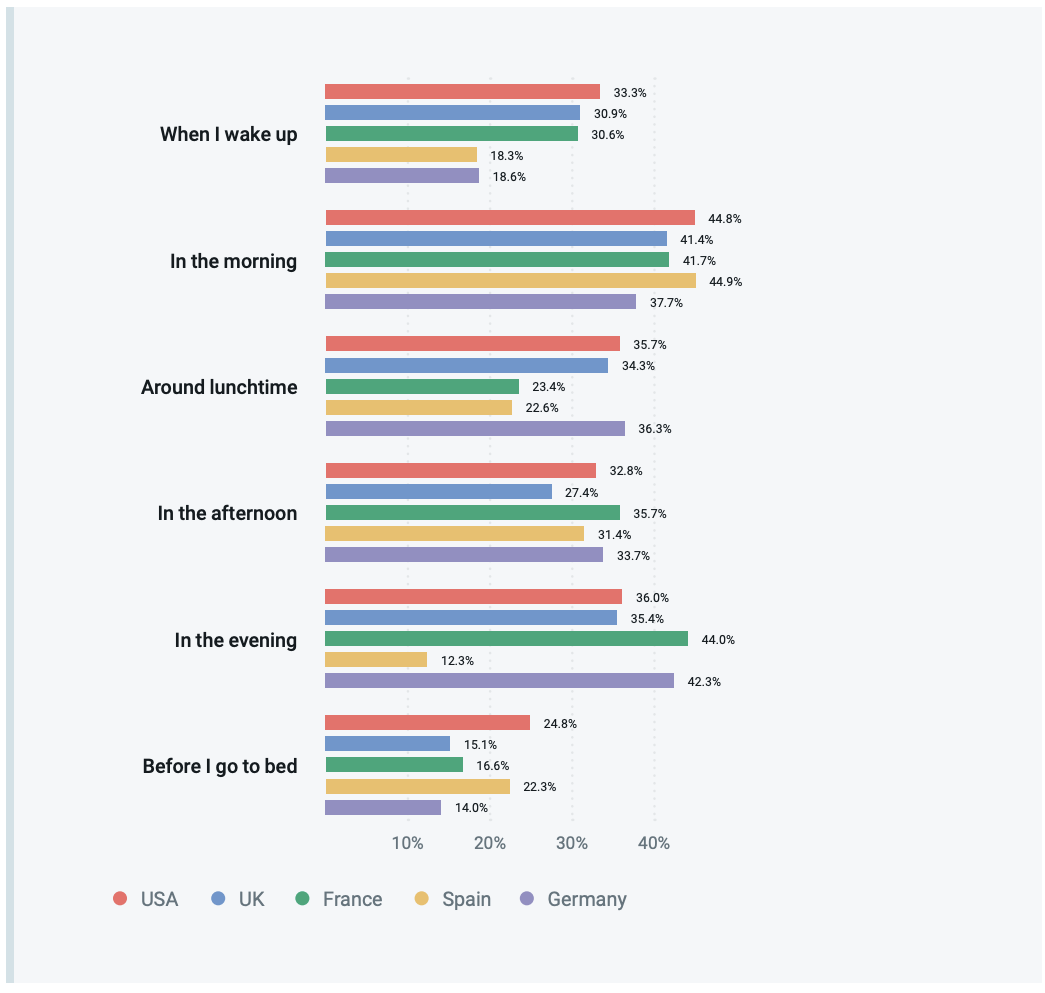
What time do you check your email?
Here’s what to know about each country:
While these are the times people check their personal emails, it doesn’t necessarily mean that they’re the times that drive actual engagement in each region. To pinpoint which days and times promote higher open and click-through rates, we looked at our sending data.
Globally, we found that the best time to send an email for maximum open rates was 3 PM Coordinated Universal Time (UTC), with engagement predictably falling the farther the time fell from 3 PM.

Click-through rates also peaked at 3 PM UTC, showing that this time is optimal for maximum engagement.
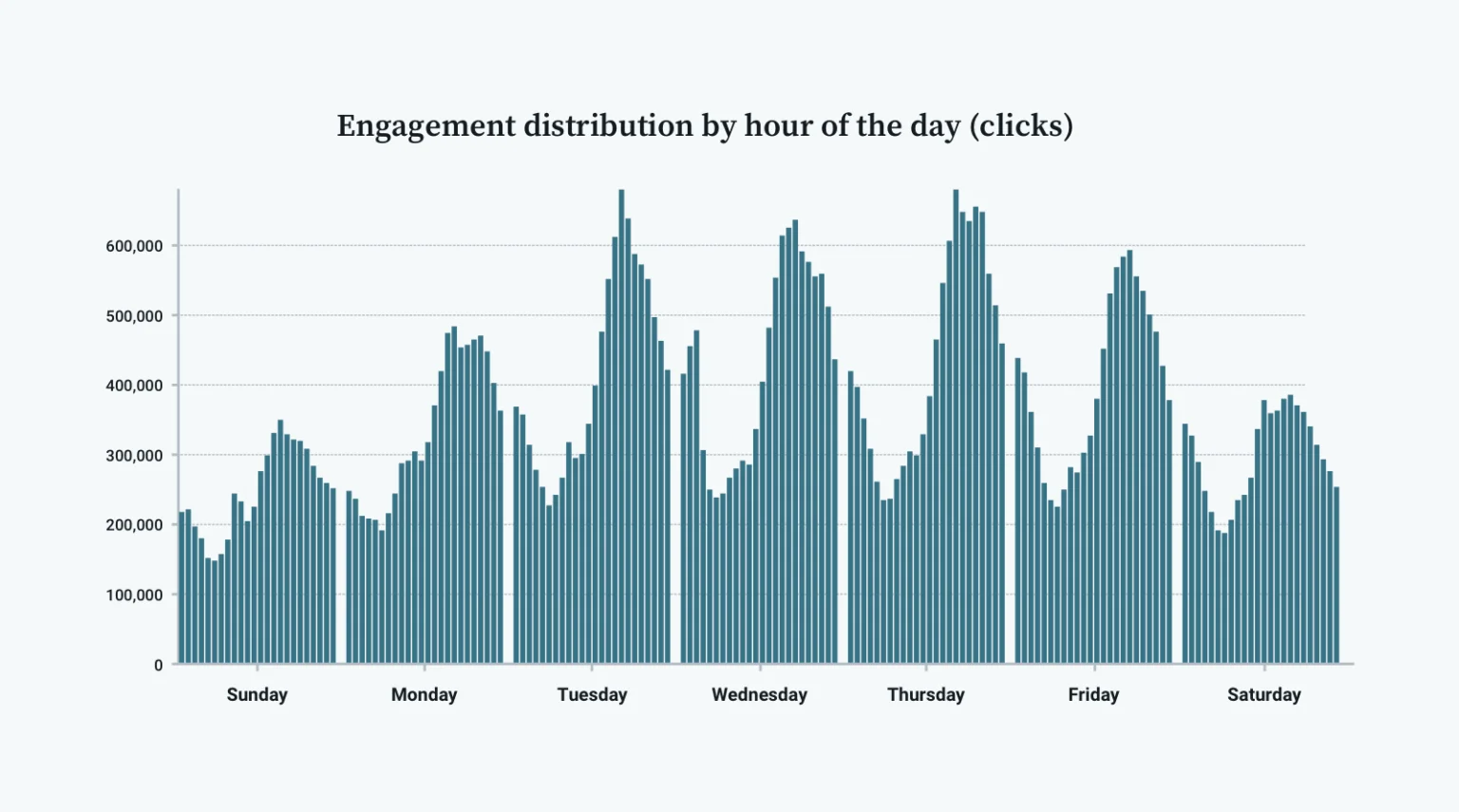
You can easily convert this time to your own timezone (for example, 3 PM UTC is 11 AM in Texas) and automatically send emails to different regions. Also, you can use a tool like Mailgun’s Send Time Optimization to target users on an individual level based on when they’re most likely to engage with your message. No mess, no fuss!
When it comes to the best days to send an email, the results are pretty predictable. You can see by the data above that while 3 PM UTC may be the best time overall, the best days tend to be midweek – Tuesday through Thursday.
This is a pretty sensible finding, considering many countries typically work Monday to Friday. Of course, one size doesn’t always fit all. If you’re emailing customers in a region with a different standard working week – like Israel (Sending at 3 PM on a Sunday; why not?) – adapt and send based on when they read your messages.
Now that you’ve finalized the day and time, it’s time to set your email for success.
Remember we mentioned legal considerations like GDPR and CAN-SPAM? These are just a couple of data privacy and consumer protection laws you must adhere to. Some regions may have specific data collection rules, while others may not. When in doubt, check your region’s (and your audience’s region’s) laws and your email service provider’s terms of service to ensure you’re in compliance. Here’s what you should know for sending to each region:
Always check to ensure you follow all regulations in any country you’re sending to. Non-compliance can mean fines, having your emails blocked, and more, so make sure you’re staying on the right side of the law.
Send me the Mailjet Newsletter.
Sending emails to a global audience may take a little more effort than usual, but it’s worthwhile to get the desired results. To recap, here are a few things you can do:
Now that we’re back from our world tour, these tips should boost your email program and help you engage audiences across any region. Refine your email strategy in a way that works for you, and be rewarded, no matter where you are in the world.